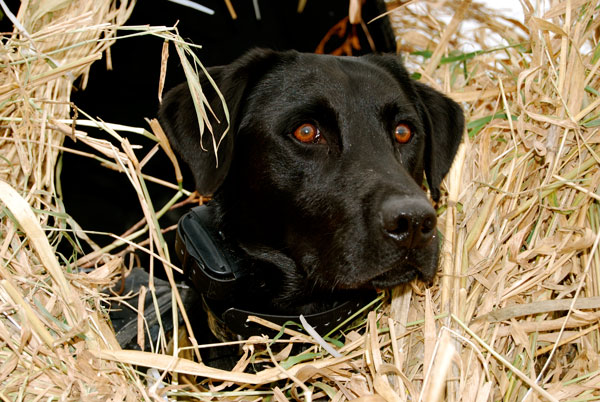New diets pop up all the time, and each has its own little niche. For example, keto is all about loading up on fats and minimizing carbs, while flexitarian is plant-based and allows little room for meat. The Blue Zone diet, one of the newer kids on the block, focuses on helping you live longer.
The Blue Zones are parts of the world where people live the longest. These areas include Okinawa, Japan; Sardinia, Italy; Nicoya, Costa Rica; Icaria, Greece; and Loma Linda, California, according to Dan Buettner, who pioneered the concept and wrote The Blue Zones Solution: Eating and Living Like the World’s Healthiest People. He broke down the dietary habits of the residents of these cities and found a commonality: They ate a lot of plants and whole foods.
It’s uncertain whether diet is the reason why people in the Blue Zones have longer lifespans, but it likely plays a role, says Scott Keatley, RD, of Keatley Medical Nutrition Therapy.
The diet does come with many health-promoting qualities, Keri Gans, RD, the author of The Small Change Diet, points out. “A diet such as this is predominately plant-based and therefore full of foods rich in antioxidants, such as fruits and veggies,” she says. “Antioxidant-rich foods have anti-inflammatory properties that may help to reduce the risk for many chronic diseases, such as heart disease and cancer. This type of diet also greatly limits foods that may lead to increased inflammation in the body, such as added sugar and saturated fats, which on the other hand are known to increase the risk for chronic disease.”
While the Blue Zone diet leans heavily on longevity, can it also help with weight loss? Here’s everything you need to know, including what you can eat and sample meal plans plus recipes.
Can the Blue Zone diet help you lose weight?
The Blue Zone diet has some overall guidelines that you are encouraged to follow:
- Limit meat to five times a month.
- Make your diet 95 to 100 percent plant-based.
- Reduce your dairy consumption.
- Eat no more than 28 grams (or seven teaspoons) of added sugar a day.
- Have no more than three eggs a week.
- Eat less than three ounces of fish three times a week.
- Snack on one to two handfuls of nuts a day.
- Drink about seven glasses of water a day (have coffee, tea, and wine in moderation).
- Consume ½ to 1 cup of beans a day.
- Fill your plate with single-ingredient, raw, cooked, ground, or fermented whole foods.
- Stop when you’re almost full, but not stuffed.
These habits can increase your odds of losing weight, says Karen Ansel, RDN, the author of Healthy in a Hurry. “It’s plant-based, so it’s filled with foods linked to a healthier body weight like beans, whole grains, fruits, and vegetables. The other nice thing about the diet is its focus on eating until you’re almost full, rather than stuffed, so it naturally helps with portion control,” she adds.
But how much weight you could lose on this diet—if any—really depends on what you were eating before you went on it, says Jessica Cording, RD, the author of The Little Book of Game-Changers. Still, she points out that “a plant-forward diet can be really helpful for weight management.”
All the fiber in this diet is also conducive to weight loss, Keatley says. “The emphasis on high-fiber—read: filling—foods may keep you from consuming too many calories,” he explains.
How is the Blue Zone diet different from the Mediterranean diet?
The creators of the Blue Zone diet have more or less picked features from various Blue Zone groups, one of which is located near the Mediterranean Sea, Keatley says. “They focus on plant-based foods because the population of Loma Linda, California, consumes that and some fish because the Okinawan groups eat that,” he says. “The diet limits wine, but the Greek and Sardinian groups tend to have several glasses of wine per week. So, it takes aspects of the Mediterranean diet, but pushes it to be a little more of a vegan than pescatarian lifestyle.”
This content is imported from {embed-name}. You may be able to find the same content in another format, or you may be able to find more information, at their web site.
The Mediterranean diet is also a “much more encompassing diet plan including all food groups,” Gans says. For example, it includes poultry, eggs, dairy, nuts, seeds, and all legumes while the Blue Zones diet limits some of these foods.
Both the Mediterranean and Blue Zone diets offer loads of perks, so either of them would be a fantastic choice, Ansel says. It’s really a matter of which one works best for you. If you prefer a little more dairy, eggs, and chicken in your life, the Mediterranean diet might be a better fit. “It might also be a good transition diet if you’d ultimately like to follow the Blue Zone plan but aren’t quite ready to go 95 percent plant-based,” she adds.
So, what can and can’t you eat on the Blue Zone diet?
Following the Blue Zone diet guidelines will help steer you toward the right foods, but the diet specifically calls out certain ones as good options like the following.
- Beans (lentils, black beans, garbanzo, white beans, soybeans)
- Sourdough or whole wheat bread
- Leafy greens (spinach, kale, beet and turnip tops, chard, and collards)
- Seasonal fruits and vegetables
- Whole grains
- Olive oil
- Yams and sweet potatoes
- Nuts (pistachio, almond, Brazil nuts, peanuts, cashews, walnuts)
- Seeds
- Goat’s and sheep’s milk
You’ll want to limit the following foods.
- Added sugar
- Dairy
- Meat
- Eggs
- Fish
While the Blue Zone diet is heavy on plant-based foods, it’s technically not vegan given that it allows for some fish, eggs, and animal products. However, you can adjust the Blue Zone diet to be vegan.
What does eating on a Blue Zone diet look like?
Here’s a sample three-day meal plan and some recipes to get you started.
Day 1
- Breakfast: Scrambled tofu with spinach, tomato, and whole wheat toast
- Lunch: Mixed green salad with chickpeas, goat cheese, and edamame, tossed with olive oil and balsamic vinegar
- Snack: Almonds with a clementine
- Dinner: Broiled salmon with quinoa and roasted veggies
Day 2
- Breakfast: Whole grain toast with nut butter and fruit
- Lunch: Potato leek soup with a side salad (try this recipe)
- Snack: Handful of peanuts
- Dinner: Polenta bowl with vegetables (try this recipe)
Day 3
- Breakfast: Coconut yogurt with berries and pumpkin seeds
- Lunch: Italian white bean soup (try this recipe)
- Snack: Handful of mixed nuts
- Dinner: Lentil sloppy Joes with roasted okra (try this recipe)
Are there any downsides to following this diet?
It depends on how you approach it, and Keatley emphasizes that balance is always key. “Just because something is plant-based, vegetarian, or vegan does not mean it is going to be good for you all the time and in unlimited quantities,” he says. “Having a balance of high-energy carbohydrates like whole-grains, beans, and legumes should be balanced with other micronutrients to maintain a healthy weight and lean body mass.”
Keep in mind that you’ll need to make sure you’re covering all of your nutritional bases if you go fully plant-based. “If you take it to the most extreme level by eliminating all animal foods, you may require a vitamin B12 supplement,” Ansel says.
The bottom line: Overall, the Blue Zone diet is a pretty solid approach. “There isn’t a downside to adding more plant foods to your diet and lowering added sugars and overly processed food,” Gans says.
This content is created and maintained by a third party, and imported onto this page to help users provide their email addresses. You may be able to find more information about this and similar content at piano.io






